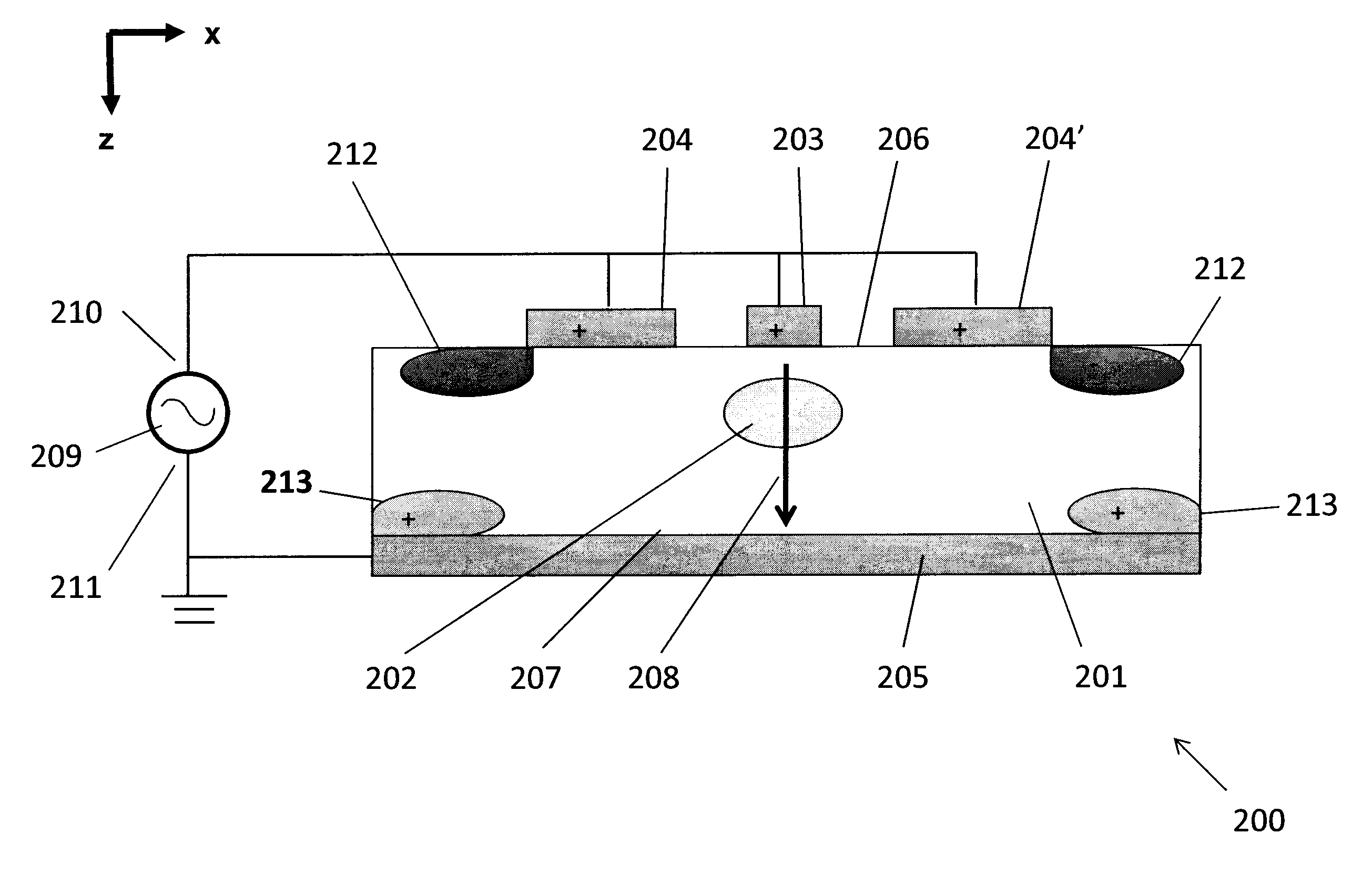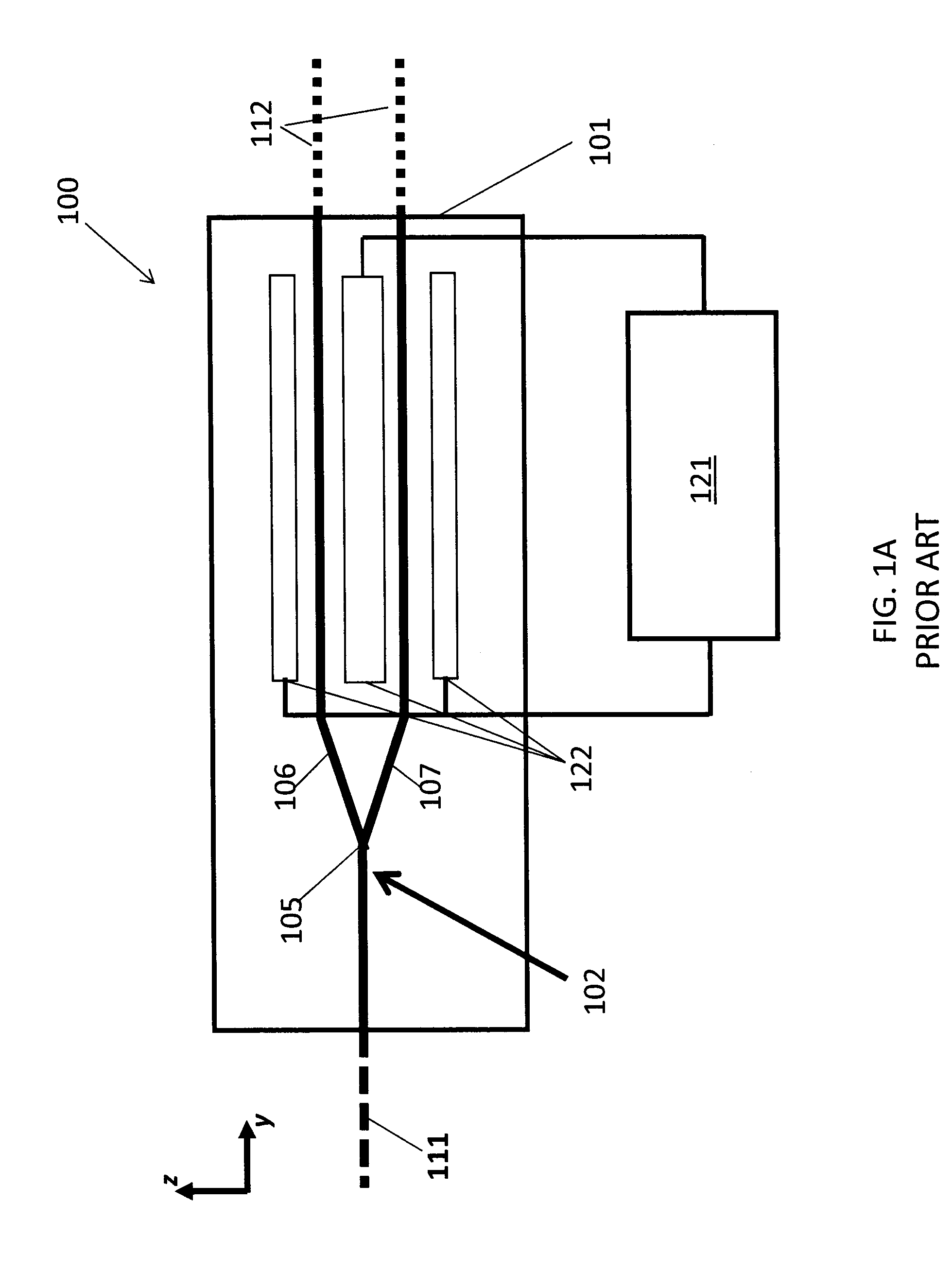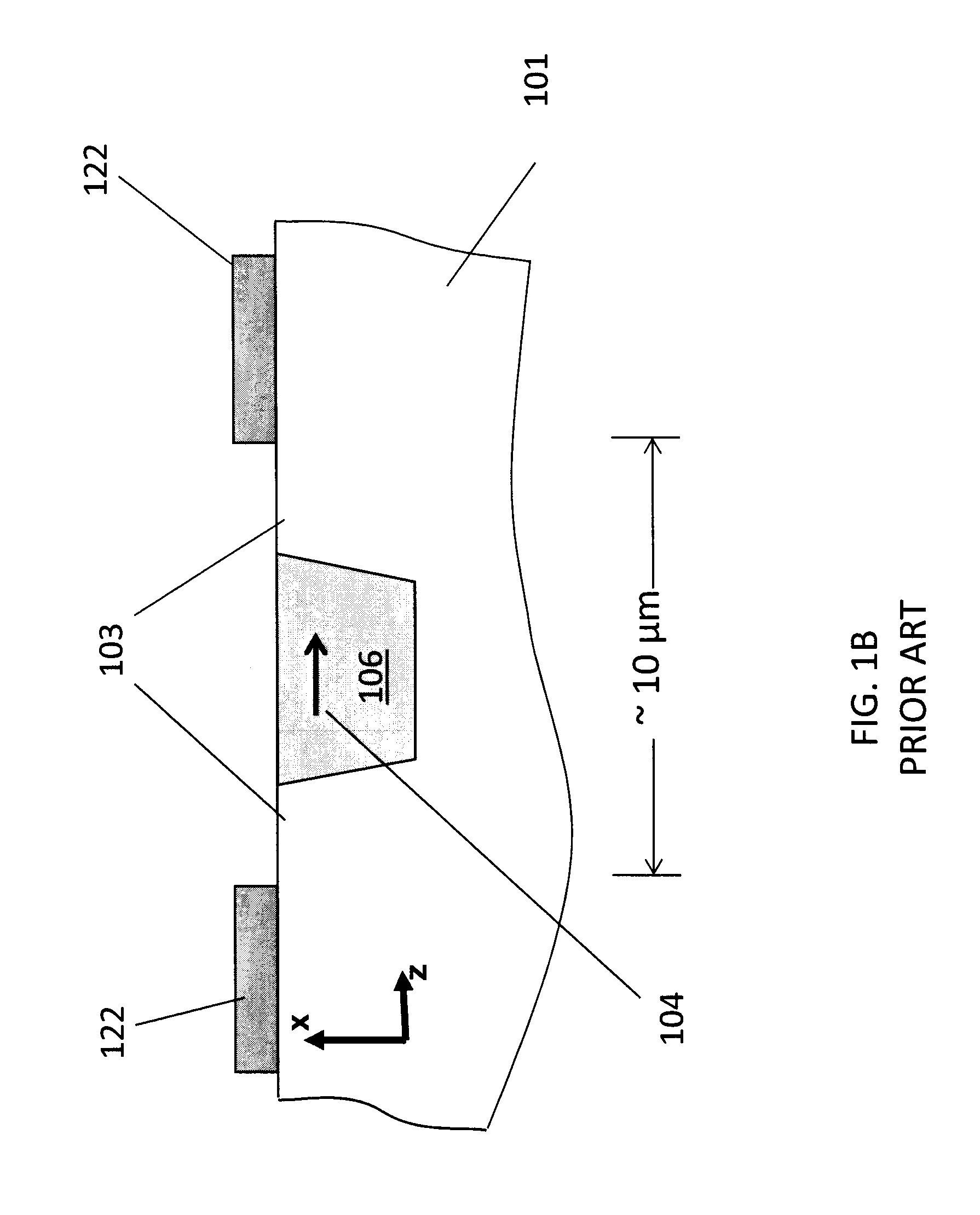Stable lithium niobate waveguide devices, and methods of making and using same
- Summary
- Abstract
- Description
- Claims
- Application Information
AI Technical Summary
Benefits of technology
Problems solved by technology
Method used
Image
Examples
Embodiment Construction
[0038]Overview
[0039]Embodiments of the present invention provide lithium niobate waveguide devices having a signal electrode and guard electrodes disposed on the upper surface of a Z-cut lithium niobate substrate, and a ground electrode disposed on the lower surface of the lithium niobate substrate. Preferably, the ground electrode is disposed beneath the signal and guard electrodes, and indeed may substantially cover the entire lower surface of the substrate. A first bias may be applied between the signal electrode and the ground electrode, so as to modulate the refractive index of a waveguide disposed therebetween. Concurrently, a second bias (which may be the same as the first bias) may be applied between each of the guard electrodes and the ground electrode. Such an arrangement may inhibit generation of space charges at the Z-surface of the crystal near the waveguide. Moreover, the guard electrodes may draw any mobile charges away from the signal electrodes, thus inhibiting drif...
PUM
| Property | Measurement | Unit |
|---|---|---|
| Thickness | aaaaa | aaaaa |
| Thickness | aaaaa | aaaaa |
| Nanoscale particle size | aaaaa | aaaaa |
Abstract
Description
Claims
Application Information
 Login to View More
Login to View More - R&D
- Intellectual Property
- Life Sciences
- Materials
- Tech Scout
- Unparalleled Data Quality
- Higher Quality Content
- 60% Fewer Hallucinations
Browse by: Latest US Patents, China's latest patents, Technical Efficacy Thesaurus, Application Domain, Technology Topic, Popular Technical Reports.
© 2025 PatSnap. All rights reserved.Legal|Privacy policy|Modern Slavery Act Transparency Statement|Sitemap|About US| Contact US: help@patsnap.com



